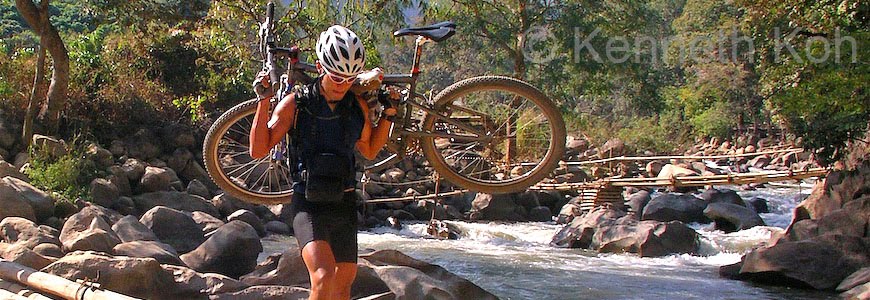Thailand is one of my favorite countries. It has a rich culture, a proud and friendly people and a funky nightlife (you mean that girl is really a GUY?).
 If you are planning a trip to Phuket, try this three-day canoeing trip that we did in 2000 within the Phang Nga Marine National Park (a World Heritage Site). We organized the trip so that each of us would have our own canoe, but paddling is optional, and is normally done by paddlers who accompany you on your canoe.
If you are planning a trip to Phuket, try this three-day canoeing trip that we did in 2000 within the Phang Nga Marine National Park (a World Heritage Site). We organized the trip so that each of us would have our own canoe, but paddling is optional, and is normally done by paddlers who accompany you on your canoe.
This was essentially a private tour – just the two clients, our guide and the boat driver. Our guide took us to a different area each day, so we saw lots of different caves as well as some tourist type places like the floating village and ‘James Bond’ Island and we got to paddle in the Talane Mangrove Forests – reputed to be the most beautiful in all of Thailand.

 The sea caves are the result of natural erosion of limestone islands, which rise out of Phang Nga Bay. There are more than 300 of these beautiful and spectacular islands, which helped to make this area a World Heritage Site. It is sometimes very tight to squeeze into these caves, which can open up into a ‘Hong’ – a lagoon caused by the collapse of the cave roof, which can happen naturally over time.
The sea caves are the result of natural erosion of limestone islands, which rise out of Phang Nga Bay. There are more than 300 of these beautiful and spectacular islands, which helped to make this area a World Heritage Site. It is sometimes very tight to squeeze into these caves, which can open up into a ‘Hong’ – a lagoon caused by the collapse of the cave roof, which can happen naturally over time.a>We spent the nights in simple bungalows and ate terrific Thai cuisine at every meal. This was, what we consider to be, a ‘must do’ trip. Highly recommended!

Photo information: All pics are scanned prints taken with a Canon Prima AS-1, a waterproof camera with a fixed 32mm lens.
From top: Longtail Boatride to the Floating Village;
Guide Briefing us on the Trip:
Unloading the Kayaks at the Talong Mangrove Forest;
Kayaking 'Hong' Island;
Squeezing into one of the Sea Caves;
On The Dinner Menu - Our guide holds up a dogfish caught by local fishermen;
Simple Bungalows for the night.

